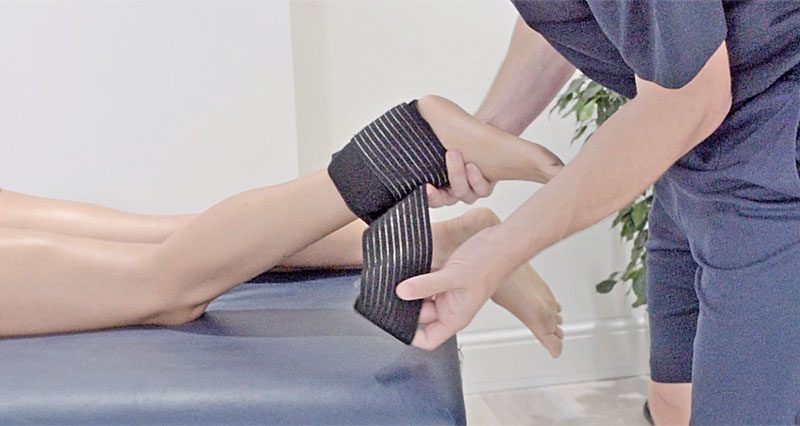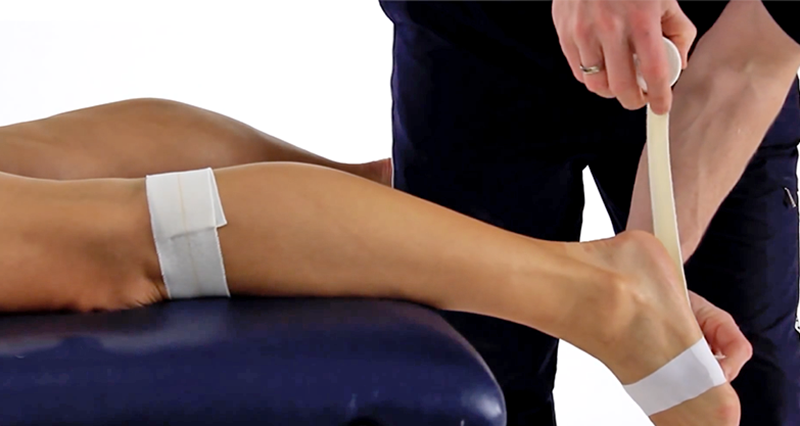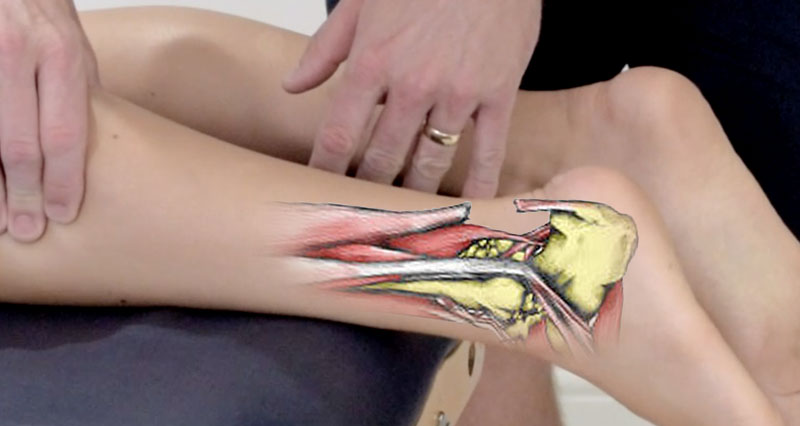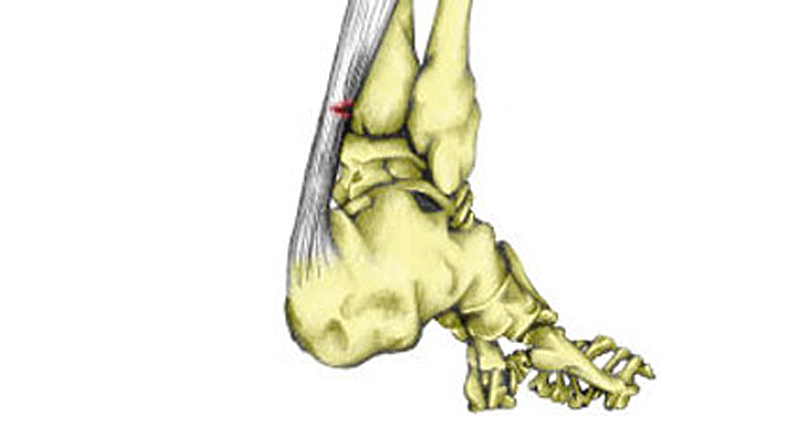Immediate treatment for any Achilles pain is to apply the P.R.I.C.E. principles (protection, rest, ice, compression, and elevation). This is especially important for acute, sudden onset injuries such as an Achilles rupture. However, chronic, long-term injuries also benefit from an initial period of rest and cold therapy before moving on to a full rehab program.
Please note, we always recommend seeking professional advice. If you suspect you have an Achilles tendon rupture then seek emergency medical advice as soon as possible.
Protection
Stop training or playing immediately to protect your Achilles from further damage. Putting as little weight as possible on your foot is vital to stop the injury from getting worse. Use an Achilles tendon taping technique to reduce the strain on your tendon.
Rest
Resting is important to ease Achilles pain and help recovery. This may mean complete rest, especially in the case of an Achilles tendon rupture, or it may simply mean modifying your training activities.
Stopping activities like running and jumping will allow your Achilles to recover quicker. Continuing to train, even if the pain doesn’t feel that bad, can cause more serious damage.
Use a heel pad in your shoes. This raises the heel and temporarily shortens your Achilles tendon, therefore reducing the ‘stretch’ on it and helping with healing. Make sure you use them in both shoes and only for a few days.
Ice
Apply ice or cold therapy to reduce any pain and inflammation. Ice the area for 10 minutes every hour initially for the first 24 to 48 hours, reducing frequency to 3 or 4 times a day over the next few days. Do not apply ice directly to the skin. Wrap ice in a wet tea towel or use a commercially available cold pack instead.
Compression
For more long-term and chronic Achilles tendon pain, applying heat for 10 minutes every couple of hours instead of ice may be more beneficial. read more on heat treatment and when to use it.
The use of compression support or compression bandages on the ankle and foot can help reduce swelling.
Elevation
Elevating your leg is part of the PRICE principles. However, it is likely only relevant if you have swelling as it helps use gravity to remove excess fluids from the ankle and around the Achilles area. This is most likely with a complete rupture of the tendon.
Achilles tendon injuries
- Achilles tendon rupture
- Achilles pain
- Partial Achilles rupture
- Achilles tendonitis
- Achilles taping
- Elevating the ankle and Achilles above heart level whenever possible can help reduce any symptoms of swelling.




